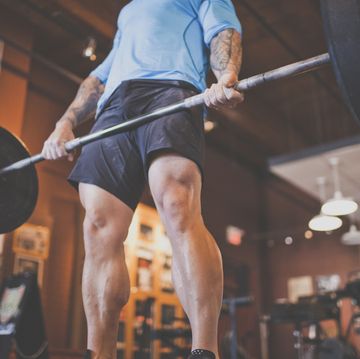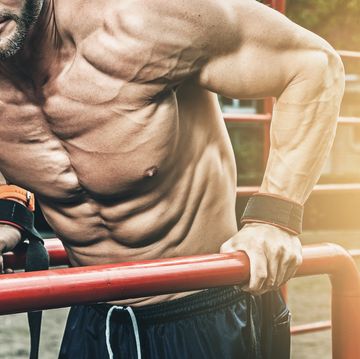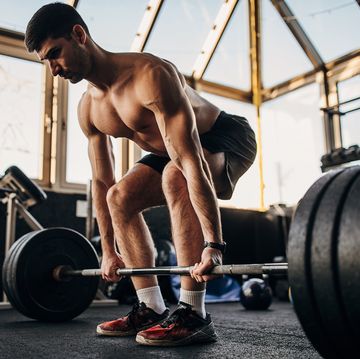This is Your Quick Training Tip, a chance to learn how to work smarter in just a few moments so you can get right to your workout.
From an energy standpoint, any type of exercise is a wildly extravagant event.
It doesn’t matter whether you’re pumping iron, pounding the pavement, spinning your wheels, or making waves—as soon as you start exerting yourself, your body hits the accelerator on energy production, burning through precious fuel stores to help you get the job done. But the method you rely on to produce that energy depends on the activity you’re doing—or more specifically, its intensity and duration. Understanding exactly what those energy systems are and applying that knowledge into practice can help you elevate your training.
But first things first. Every process in your body—from cellular signaling to muscular contraction—runs on a molecule called adenosine triphosphate (ATP). ATP is the basic unit of energy for all living organisms on Earth, including humans, and to make it, the body relies on three different production systems (a.k.a. “metabolic pathways”): phosphagen, glycolytic, and oxidative. Each of these systems uses a different fuel source, and each is tapped under particular conditions.
Let's break down the body's three energy systems to shed some light on the way that your body runs.
The Phosphagen System
When you start to exercise, the phosphagen system kicks into high gear, metabolizing a molecule called phosphocreatine to produce ATP. The phosphagen system doesn’t require oxygen (making it an "anaerobic system") and works fast, but because your cells don’t store a lot of phosphocreatine, its ATP-producing capacity is limited. That means it maxes out after only about 10 seconds of exertion.
But if you’re exercising in repeated, brief, high-intensity bursts (e.g., weightlifting, very short sprints), it remains the dominant energy system for the duration of your workout.
If you’ve ever wondered about the value of supplementing with creatine, the practice is largely to keep this system cranking for longer. The body converts creatine to phosphocreatine, and loading up on it through supplementation will help you bang out more high-quality reps. But even if you keep your cellular stores topped off, you’re going to push the limits of the phosphagen system in about the time it takes you to sing the alphabet.
The Glycolytic System
After about 10 seconds of exertion, your body transitions to the glycolytic system, which is the dominant means of energy production for the next two minutes of exercise. If you’re running intervals or doing HIIT, this is your go-to metabolic pathway.
The glycolytic system uses carbs (in the form of blood glucose and stored glycogen) to produce ATP. Like the phosphagen system, it starts out producing energy anaerobically, but as you approach the two-minute mark, oxygen becomes an increasingly important part of the process. After about two minutes, it becomes an absolute necessity.
The Oxidative System
That’s the point when the oxidative system takes over. Due to the importance of oxygen for energy production in this pathway, it's sometimes called the "aerobic system". The oxidative system uses both carbs and fat in addition to oxygen to produce ATP. While it doesn’t produce ATP very quickly, it can produce a lot of it, making this system the preferred one for long-duration, relatively low intensity “cardio” activities such as steady-state runs and bike rides.
To be clear, none of these systems ever “shut off.” They’re all running all of the time, but the one that’s emphasized changes based on your energy needs, which are determined by the intensity and duration of your training. And arming yourself with this knowledge will allow you to optimize your workout performance and results.
Your move: If your training focus is weightlifting, consider supplementing with creatine for the reasons mentioned above. There are many purported ergogenic (performance-enhancing) supplements out there, but creatine is one of the few with science behind it.
Also, no matter what your primary training method is, consider expanding your program to work all three metabolic pathways more intentionally. If you typically pump iron, adding cardio to your weekly routine can help enhance your endurance, allowing you to increase your training volume. If cardio is your jam, strength training once or twice a week can help boost your power and injury resistance.
Either way, the payoff is becoming a more well-rounded, better informed athlete.

Trevor Thieme is a Los Angeles-based writer and strength coach, and a former fitness editor at Men’s Health. When not helping others get in shape, he splits his time between surfing, skiing, hiking, mountain biking, and trying to keep up with his seven year-old daughter.














